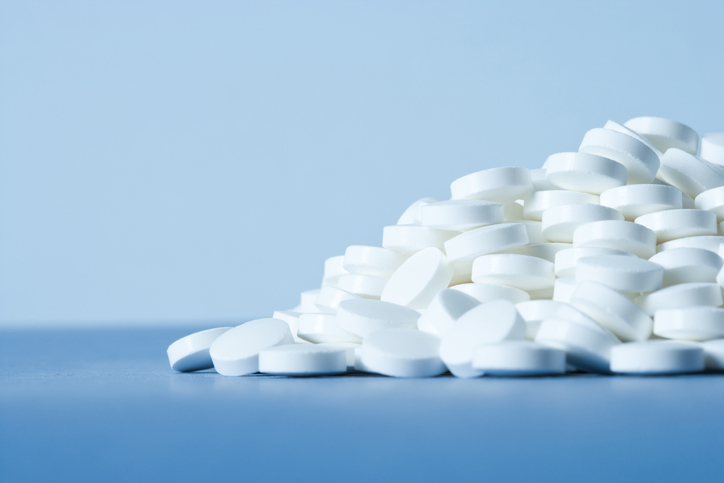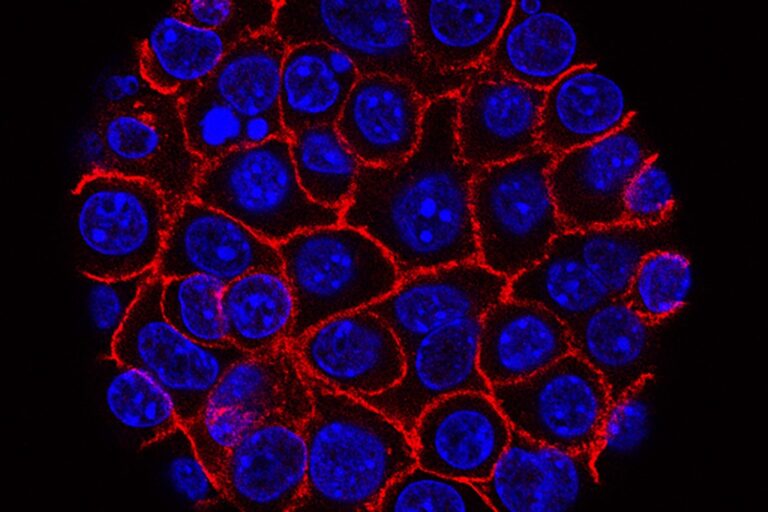
A Viking Therapeutics drug that hits two targets to spark weight loss achieved the goals of a closely watched mid-stage clinical trial, but with results that also show many patients stopped the therapy due to gastrointestinal problems, which investors viewed as denting the daily pill’s prospects in a growing field of oral obesity medicine contenders.
All five doses of the drug, VK2735, led to statistically significant differences compared to both baseline measures and placebo in the 13-week, dose-finding Phase 2 study, Viking said Tuesday. The greatest weight reduction — an average of 12.2%— was observed at the highest dose, 120 mg. The preliminary results show reductions in body weight that were progressive at all doses throughout the study. This weight loss did not plateau as of 13 weeks, suggesting patients would continue shedding weight with longer dosing.
Viking also reported that up to 97% of participants in the study drug arms achieved 5% or greater weight loss, compared with just 10% of patients in the placebo group, a statistically significant result that met a secondary goal of the study. Up to 80% of patients who received VK2735 achieved 10% or greater weight loss compared with 5% of those in the placebo group.
VK2735 is designed to target and activate two gut receptors, GLP-1 and GIP — the same targets hit by Eli Lilly’s blockbuster once-weekly injectable drug, Zepbound. Gastrointestinal problems, such as nausea and diarrhea, are a known side effect of metabolic medicines in this drug class. Such adverse effects lead many patients to stop taking the drugs.
Viking is developing subcutaneously injectable and oral formulations of VK2735. The oral version would offer a less burdensome dosing option compared to weekly injections. Pills are also envisioned as a potential maintenance treatment after patients achieve their target weight loss with an injectable obesity drug. But for any obesity pill to fill that role, an acceptable tolerability profile is essential.
In the Phase 2 test of oral VK2735, discontinuation rates were dose dependent. The highest dose group had the highest discontinuation rate with 38% of participants in this cohort stopping treatment early compared to an 18% discontinuation rate in the placebo arm. Nausea was the most common adverse event, reported in 58% of patients who received the study drug. This side effect was reported in 48% of those who received a placebo. Viking said most of the nausea was characterized as mild or moderate. Vomiting was reported in 26% of patients who received VK2735, compared with 10% of those in the placebo group. The company said the gastrointestinal problems were generally observed early in treatment and decreased in frequency upon repeated dosing.
The Phase 2 study included an exploratory cohort designed to assess VK2735 in weight loss maintenance. In this group, participants were rapidly titrated to 90 mg daily doses. After four weeks, patients received 30 mg daily doses for seven weeks. Viking reported this group showed rapid and progressive weight loss through the 90 mg treatment period. This weight loss was maintained following the transition to the lower daily dose.
Shares of Viking opened Tuesday at $25.99 each, down more than 38% from Monday’s closing price. William Blair analyst Andy Hsieh acknowledged the tolerability issues and higher discontinuation rates that were worse than the encouraging Phase 1 data reported for the pill last year. But in a note sent to investors, Hsieh pointed out that the weight loss marks posted by VK2735 outpace Phase 2 results for both Eli Lilly’s oral GLP-1 drug, orforglipron, as well the high dose of Novo Nordisk’s oral version of its GLP-1 peptide drug semaglutide. Earlier this month, Eli Lilly reported Phase 3 data for orforglipron that disappointed analysts on measures of weight loss and tolerability, leaving the door open to smaller contenders, such as Viking.
Leerink Partners analyst Thomas Smith said in a research note that the weight loss achieved by Viking’s pill is competitive with Lilly’s orforglipron, but differences in how the drugs were titrated in their respective studies make cross-trial comparisons difficult. In the Lilly drug’s Phase 2 test, titration varied with patients in the high dose arm reaching that dose by week 12. By comparison, patients who received the high dose of Viking’s drug reached that dose level by week six. In a Tuesday conference call, Viking management said the company plans more gradual titration moving forward, which Smith said will offer the potential to optimize efficacy and tolerability.
Both Hsieh and Smith see the Viking stock sell-off as overblown. While the tolerability profile for VK2735 is worse in Phase 2 compared to Phase 1, William Blair sees the 30 mg dose having a placebo-like profile. The firm believes this dose could be selected as the potential maintenance dose in the drug’s pivotal test. Given the higher costs associated with producing the higher doses, Hsieh believes it’s unlikely Viking will advance the two higher doses to pivotal testing. He added that tolerability can be mitigated and improved by expanding the titration to four weeks in the Phase 3 study versus two weeks in the shorter Phase 2 trial, named VENTURE-Oral. Hsieh is looking ahead to an upcoming Phase 2 master protocol study that will explore the transition from injectable VK2735 to maintenance therapy with once monthly injections or daily doses of the oral formulation of the Viking drug.
“Given that individuals seeking therapy for chronic weight management are likely looking for a rapid degree of initial weight loss, it is our view that subcutaneous injections will continue to be preferred during the initial course of treatment,” Hsieh said. “Based on the VENTURE-Oral study, 30 mg or 60 mg are both well-positioned in the maintenance setting, which we believe represents the largest [total addressable market] in the obesity market driven by the chronicity of the condition.”
The market for potential oral obesity drugs is competitive. Besides the Eli Lilly and Novo Nordisk pills, Structure Therapeutics is in mid-stage clinical development with an oral small molecule agonist of GLP-1. Roche is in early clinical development with an oral GLP-1 drug codenamed CT-996, which comes from its $2.7 billion acquisition of Carmot Therapeutics. Startups are also part of the mix. Response Pharmaceuticals recently reported encouraging Phase 2 data for its twice-daily pill, which goes after a novel target called iMTP.
Not all oral efforts obesity drug efforts have been successful. Earlier this year, Pfizer stopped work on an oral small molecule targeting GLP-1 after a liver complication emerged in Phase 1 testing.
Photo: Martin Barraud, Getty Images





